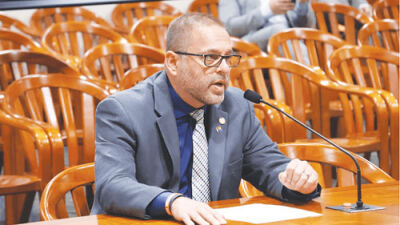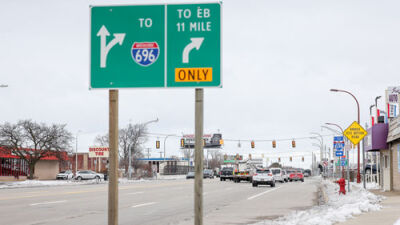OAKLAND COUNTY — Beginning June 30, a new law will go into effect that is meant to take people’s phones out of their hands while driving their vehicles.
Signed by Gov. Gretchen Whitmer earlier this month, the “hands-free” distracted driving law puts new restrictions on drivers when it comes to handling their phones. Three bills, HB 4250, 4251 and 4252, were introduced in the state Legislature a few months ago and sent to the governor last month for approval.
According to the new law, an individual can’t hold or use a phone while operating a vehicle or a school bus.
The law says that a driver cannot “Send or receive a telephone call; Send, receive, or read a text message; View, record, or transmit a video; Access, read, or post to a social networking site.” It also states that a driver can’t reach “for a mobile electronic device in a manner that requires a driver to maneuver so that the driver is no longer in a seated driving position, restrained by a seat belt.”
With the new law going into effect soon, local police agencies have been reviewing the legislation in the lead up to June 30.
Clawson Chief of Police Kellie Bauss said her department’s staff has reviewed the law and everyone is familiar with it, but it won’t change how officers conduct their usual selective traffic enforcement.
“At this time, we’re not assigning any extra bodies to a specific detail for it, but I imagine that could come in the future,” she said. “Right now, they all have been trained on the new law and are familiar with it and, you know, we think it’s something that’s very important that’s finally gone into effect.”
Bauss said the new law is self-explanatory and pretty strict, but said it has been needed for a long time.
“Cellphones distract drivers, and that’s been a cause of accidents, we’ve found, for quite some time now,” she said. “Hopefully, this decreases distracted driving in general and (will be) decreasing the number of accidents that occur and increasing the safety of everybody in the community.”
Berkley Public Safety Detective Lt. Andrew Hadfield said the biggest thing moving forward with the hands-free law will be educating the public on the change and making sure drivers are aware of it.
“There’s a reason that it’s here; because we continue to have problems with people trying to operate a motor vehicle down the road and they shifted their focus and attention to a phone instead of actually driving the car,” he said. “We want to prevent accidents. So the entire idea of it is just to prevent bigger problems by putting the phones down and just focusing on the actual aspects of driving.”
Hadfield also agreed with Bauss’ assessment that the change in the law has been a long time coming and that the original language in the texting and driving law was not strong enough, as it talked about “specifically sending and receiving messages through the phone.”
“It was geared towards seeing someone sending or receiving messages, but they were still using their phone, and trying to show or prove what they were doing became kind of difficult,” he said. “I think this covers what the intent of that law was — that we don’t want people to get distracted on their phones, and so I think they have gotten it closer to being right with the way it’s currently worded.”
The new law has exceptions. These include the use of a phone by a police officer, firefighter, emergency medical technician and paramedic; the use of a phone for an emergency, including calling or texting 911, or calling a law enforcement agency, health care provider, fire departments or other emergency service agency; and using a phone for GPS, as long as the “information is not entered by hand into the global positioning or navigation system feature of the mobile electronic device.”
More exceptions can be found in the official language of the law on the Michigan Legislatures’s website, legislature.mi.gov.
If an individual were to break the new law, the first violation would call for a $100 civil fine or to perform 16 hours of community service, or both. A second violation would result in a $250 civil fine or 24 hours of community service, or both. These fines and hour requirements double if the individual is involved in a crash.
Three or more civil infractions within a three-year period can lead to a court order where the individual must “complete a basic driver improvement course within a reasonable time as determined by the court.”
Bauss said the only questions the department has gotten from the public so far is if it’s OK for people to use their phones at stop signs or red lights, and the answer for both is no.
“You’re still operating the vehicle,” she said. “You still need to be cognizant of everything that’s going on around you and be able to react to that, and so you can’t be distracted just because you’re stopped temporarily at a red light or a stop sign.”
 Publication select ▼
Publication select ▼






















